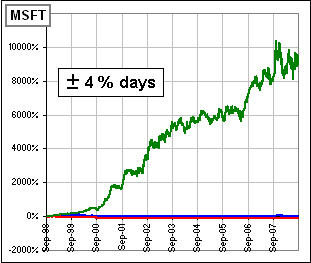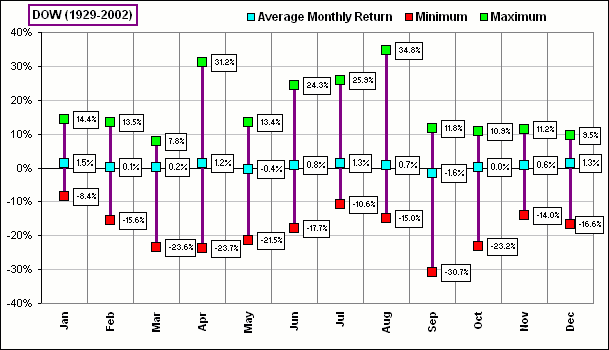| Missing Good and Bad days |
Once upon a time we talked about the effect (on your Portfolio) of missing the "best" months or "worst" months. Click!
Now we'll consider missing the days which gained 5% or more and missing days which lost 5% or more.
|
>Just 5%? What about 4% or ...?
Patience. Suppose we'd invested in the S&P500 for the past ten years. Suppose, too, that we made no gains on those days when the daily return exceeded 5%. Our portfolio would look this 
Note the effect of missing days when the daily return was less than -5%. >Looks like it matters more to get those good days.
>And what about 4% days? And what about some other asset? And what about ...?
|  |



Here are some examples where you miss +4% days or -4% days:



Here are some examples where ...
>Where's the spreadsheet?
Here. Just click on the picture:
>It'd be neat if I could see what missing months might ...?
That spreadsheet also has a "Missing Months" sheet that looks like so (starting with a $10 investment in the DOW):
|
Unlike the previous sheet, you can't pick the asset on the "Months" sheet. >Speaking of months, I understand that September is the worstest month, right?
>Uh ... isn't this the month of September??
|  |



